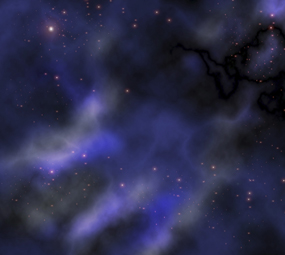
What’s Goin’ on Up There?
Winter not only brings sparkling snows but also a cavalcade of the brightest stars in the sky: Orion and his Belt, the Winter Hexagon and the shiniest diamond in the heavens, Sirius the Dog Star. Crisp temperatures and dry air enhance the twinkly brilliance of winter nights.
While the sun keeps low in the south, making for the shortest days of the year, the moon climbs high during the long nights, inviting us to bundle up and head outside for a frosty walk in the radiant landscape.
Although there are no evening planets early this season, Mars, Jupiter and Saturn ornament the dawn sky. Finding them is easy when the moon stops by each during its monthly run of the heavens. In early March, Venus returns to the evening sky, pairing up with Mercury in a wonderful conjunction.
While all these gears are turning, you can look up any time to enjoy the dipper-shaped Pleiades star cluster and its neighbor, the V-shaped Hyades. Both groups stand above Orion the Hunter. An imaginary arrow shot through Orion’s Belt to the east will take you straight to Sirius. In the northern sky, the Big Dipper pivots on its handle, the two stars at the end of the bucket pointing to Polaris, the North Star.
Highlights this season include the Geminids, the richest meteor shower of the year, and a dawn total lunar eclipse on the last day of January. Clear skies and keep looking up!
Night Sky – Winter Schedule
November 28 through late December – Watch for the International Space Station at dusk. It looks like a brilliant star moving steadily from west to east across the sky. If you see it suddenly disappear, it’s been eclipsed by Earth’s shadow!
December 3 – Full Cold Moon
December 13 – Waning crescent moon shines above Mars in the southeastern sky at the start of dawn. On the 14th, it stands above bright Jupiter.
December 13-14 – Geminid meteor shower. No moon will interfere during the peak of the shower, when up to 100 meteors per hour might be seen from a dark, rural sky. You can start watching about 9 p.m. on the 13th facing east, but the later you’re out, the more meteors you’ll see. Best time is between midnight and 3 a.m. Geminids originate from bits of rock crumbled from the asteroid 3200 Phaethon.
December 21 – Winter Solstice. Winter begins at 10:28 a.m. Central Time (11:28 a.m. Eastern). Days are shortest and nights longest.
January 1 – Full Wolf Moon
January 4 – Waning gibbous moon passes very close to Leo’s brightest star, Regulus, late this evening. Use binoculars.
January 5-8 – Mars and much brighter Jupiter pair up at dawn in the southeastern sky. On the 6th and 7th, they’ll be just half a moon diameter apart!
January 11 – Waning crescent moon, Jupiter and Mars gather in a tight bunch before and at dawn in the southeast.
January 13 – Saturn and Mercury will be in close conjunction low in the southeastern sky an hour before sunrise.
January 31 – Second Full Moon of the month and popularly called a Blue Moon (see next entry).
January 31 – Total lunar eclipse. Find a location with a good view to the west because the eclipse happens shortly before moonset at dawn. Partial eclipse begins at 5:48 a.m. Central Time (6:48 a.m. Eastern). Total eclipse starts at 6:52 a.m. (7:52 a.m.). For both Central and Eastern time zones, the moon sets while still in total eclipse.
February 11 – Waning crescent moon shines above Saturn in the southeastern sky at the start of dawn.
Mid-February – Sirius and Orion stand due south around 9 p.m. local time.
Late-February – Venus returns to the evening sky very low in the west about 40 minutes after sunset.
March 1 – Full Worm Moon
March 2-6 – Venus and Mercury pair up low in the western sky at dusk. Closest on the 3rd.
March 7 – Waning crescent moon shines above Jupiter in the southeastern sky before dawn.
March 18 – Very thin, waxing crescent moon triples up with Venus and Mercury low in the west at dusk.
March 20 – Spring Equinox. Spring begins at 11:15 a.m. Central Time (12:15 a.m. Eastern). Day and night across the Earth are almost exactly equal: 12 hours of daylight, 12 hours of night.
March 22 – Waxing crescent moon shines just above Aldebaran, brightest star in Taurus the Bull.
March 29–April 1 – Mars passes very close to Saturn in the southeastern sky at dawn. Best on the 1st.
March 31 – Second month in a row with two full moons, so another Blue Moon!





